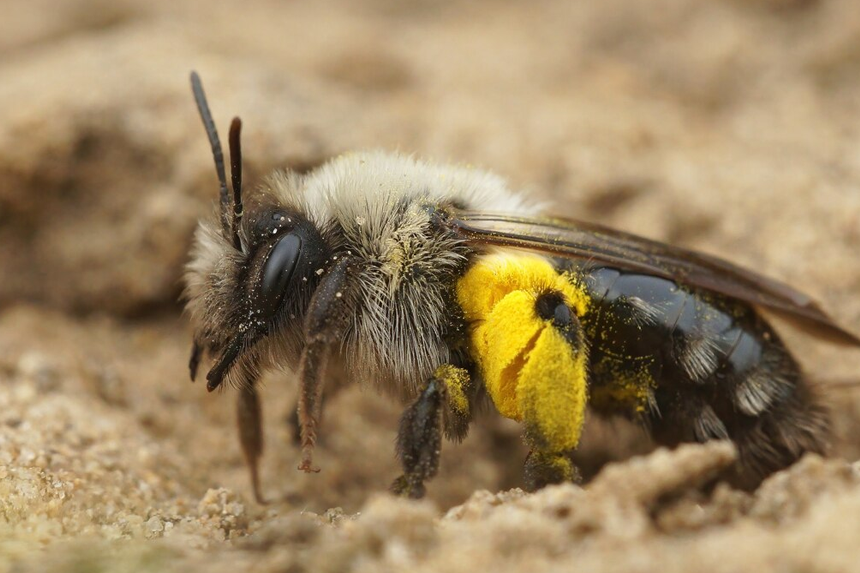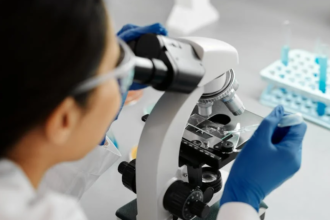Recent data analysis has revealed that neonicotinoid pesticides, known to harm bee populations, were found in most English rivers tested by the Environment Agency in 2023 and 2024. A study by environmental charities The Rivers Trust, Wildlife, and Countryside Link found that these harmful chemicals were present in 85% of rivers tested. The findings have sparked concerns about pesticide use’s ongoing impact on pollinators and the broader ecosystem.
Why Was the Emergency Authorization of Neonicotinoids Granted?
Neonicotinoids are a class of insecticides widely used in agriculture, horticulture, and veterinary medicine to manage pests. However, they have been shown to harm bees and other essential pollinators. Despite being banned in the UK due to their toxicity to bees, the previous government authorized the emergency use of these chemicals to combat a disease affecting sugar beet crops. The Office for Environmental Protection (OEP) is now investigating this decision.
The Department for Environment, Food and Rural Affairs (Defra) approved the pesticide in 2023 and 2024 to protect sugar beets from virus yellows, a disease spread by aphids. The British Sugar’s agriculture director defended the pesticide’s use, stating, “The pesticide was needed to protect the UK sugar beet crop and farmer livelihoods.”
However, environmental groups have criticized this decision, urging the government to take more decisive action to limit the use of neonicotinoids. “We must enforce and extend the ban on neonicotinoids to safeguard both plant and animal health,” said a Wildlife and Countryside Link spokesperson.
What Are the Ongoing Investigations Into Pesticide Use?
The OEP is investigating whether the government’s emergency authorization for the pesticide violated environmental laws. Dr. Richard Gill, a principal researcher at Imperial College, has voiced his concerns about the continued presence of neonicotinoids in UK waterways, saying, “It is concerning that we’re finding these pesticides in the rivers. It is important to monitor the concentration of these chemicals in our waterways.”
Dr. Gill explained that high concentrations of neonicotinoids can kill bees outright, but even smaller amounts can have significant long-term effects. “Smaller quantities can cause ‘cumulative, sub-lethal’ effects on bees, altering their behavior and even impacting their genes. Under the influence of neonicotinoids, bees can struggle to fly and seem to bring back less pollen to their hives.”
This has significant implications for bee populations, which have declined for years due to various factors, including habitat loss, climate change, pesticide use, and disease. “Many bee species are not doing very well,” Dr. Gill added, underscoring the urgency of protecting pollinators.
How Do Neonicotinoids Affect Aquatic Ecosystems?
The presence of neonicotinoids in waterways is not just a concern for bees. A River Action campaign group representative warned that agricultural waste, including pesticide runoff, is responsible for a growing percentage of water pollution in the UK. “Agricultural waste is responsible for a greater percentage of water pollution than sewage in the UK,” she said.
Neonicotinoids not only threaten pollinators but also harm aquatic ecosystems. River insects, a critical part of the food chain, are especially vulnerable to these chemicals. “River insects are right at the bottom of the food chain,” she said. “If we’re destroying the bottom of the food chain in our rivers, this will have a knock-on effect on the rest of the ecosystem.”
In addition to their environmental risks, neonicotinoids are also dangerous to human health. The representative cautioned people considering swimming in polluted rivers to “understand the levels of contamination” and “educate themselves about the risks before entering the water.”
Why Is More River Monitoring Needed?
The latest analysis of Environment Agency data shows a slight increase in the levels of neonicotinoids in rivers compared to previous years. However, the charities involved in the study pointed out that their analysis was based on small sample size, as only a limited number of sites were tested.
“There is a need for more comprehensive river monitoring by the Environment Agency,” said a spokesperson for The Rivers Trust. “The small proportion of sites tested in the last year means we don’t yet know the full extent of contamination in our waterways.”
What Is the Government's Response to the Issue?
The government has promised to take action on this issue. A Defra spokesperson stated, “We are committed to tackling all sources of pollution to clean up our rivers, lakes, and seas. This government has been clear that we will change existing policies to ban the use of neonicotinoid pesticides that threaten bees and other vital pollinators.”
At the Labour Party conference in September, Environment Secretary Steve Reed committed to “restore nature and stop animal waste, fertilizer, and pesticide pollution running into our waterways.”
The Environment Agency has said its testing of neonicotinoids in rivers is “specifically targeted at sites where we want to better understand the chemical risk and any action needed to protect the environment.”
As investigations continue and further monitoring occurs, the debate surrounding using neonicotinoids and their environmental impact remains critical for government officials and environmental organizations. The outcome of these investigations and the government’s next steps could have lasting effects on the future of pesticide regulation and the health of the UK’s ecosystems.








